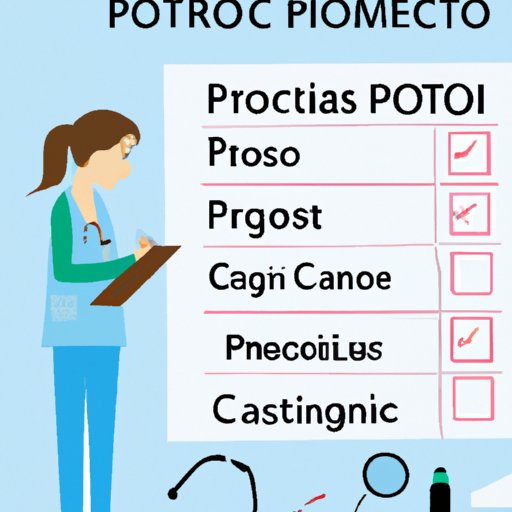Introduction
Polycystic ovary syndrome (PCOS) is a common hormonal disorder that affects women of reproductive age. It is estimated that up to 10% of women of childbearing age have PCOS. The condition is associated with an imbalance of hormones, which can lead to a variety of symptoms, including irregular menstrual cycles, infertility, weight gain, acne, and excessive body hair.
If you are experiencing any of these symptoms, it’s important to seek medical help. Diagnosing PCOS can help you understand what’s happening in your body and get the treatment you need. Here’s a step-by-step guide to diagnosing PCOS.
Step 1: Visit Your Doctor
The first step in diagnosing PCOS is to visit your doctor. They will ask about your symptoms, as well as your family history. Be sure to provide as much information as possible. This will help your doctor determine whether PCOS might be the cause of your symptoms.
Your doctor may also recommend lifestyle changes, such as eating a healthy diet, exercising regularly, and quitting smoking. These changes can help reduce the severity of your symptoms and improve your overall health.
Step 2: Physical Examination
Your doctor will do a physical exam to look for signs of PCOS. This includes checking your weight, blood pressure, and waist circumference. Your doctor may also check for signs of excessive body or facial hair, acne, and dark patches of skin on the neck or arms.
Your doctor may also use a tool called a transvaginal ultrasound to look for cysts on your ovaries. This is a safe and painless procedure that uses sound waves to create an image of the inside of the body.
Step 3: Blood Tests
Your doctor may order blood tests to measure levels of hormones associated with PCOS. These include testosterone, luteinizing hormone (LH), follicle-stimulating hormone (FSH), and prolactin. Abnormal readings can indicate the presence of PCOS.
Step 4: Ultrasound
An ultrasound can help your doctor identify cysts on your ovaries. It can also detect any other abnormalities in the uterus or ovaries that may be associated with PCOS.
Step 5: Cholesterol Check
A cholesterol test can help assess your risk of cardiovascular disease, which is higher in people with PCOS. Your doctor will take note of any abnormal results.
Step 6: Questionnaire
Your doctor may ask you to fill out a questionnaire to assess your risk of PCOS. This can include questions about your menstrual cycle, body hair growth, and other potential symptoms of PCOS.
Conclusion
Diagnosing PCOS can be a complicated process, but it’s important to seek help if you think you may have the condition. By visiting your doctor, undergoing physical exams and tests, and providing information about your symptoms and family history, you can get the help you need to manage PCOS and live a healthier life.
(Note: Is this article not meeting your expectations? Do you have knowledge or insights to share? Unlock new opportunities and expand your reach by joining our authors team. Click Registration to join us and share your expertise with our readers.)
